Introduction
ChatGPT, the new wave in AI (Artificial Intelligence) has taken the global AI technology landscape by storm, becoming the most sought-after keyword on major search platforms. Developed by OpenAI’s advanced language generation model team to simulate a seamless human conversation, it is challenging expectations and proving an invaluable tool for industry professionals. By all accounts – judging from Google’s skyrocketing figures (Figure 1) – its popularity continues to rise rapidly in unprecedented ways. With its wide variety of applications in content creation, customer service, summarization, translation, coding, and debugging, it has the power to disrupt the current state and the future of enterprises.

ChatGPT is a variant of the GPT (Generative Pretrained Transformer) language generation model, a deep learning model that uses transformer architecture. It is a neural network that processes data sequences, such as text.
What is ChatGPT?
When ChatGPT is asked to introduce itself, it not only explains how it is trained but also tells us its purpose: “I am an AI language model developed by Open AI, designed to generate human-like text in response to prompts given to me by users. I have been trained on a massive corpus of text data, allowing me to generate coherent and grammatically correct sentences based on the information I have learned. My main purpose is to assist users in generating text, answering questions, and providing information on a wide range of topics.”
It falls under the Generative AI systems, artificial intelligence that can generate new text, images, audio, or video content.
Some examples of generative AI models:
• Generative Adversarial Networks (GANs) are trained on two neural networks, a generator and a discriminator. One learns to generate new samples, and the other learns to differentiate generated samples from real samples. A few of its applications are Image Editing, Attention Prediction, 3D Object Generation & Cyber Security.
• Transformer-based language models such as GPT-3.5 on which ChatGPT is built. Figure 2 shows a sample conversation with ChatGPT.
• Text-to-image generation models, such as DALL-E 2, which applies the relationship between the images and text to describe specific aspects of that image. Figure 3 shows images generated by DALL-E.
• Image synthesis models, such as StyleGAN, are an extension to GAN architecture capable of generating large high-quality images and controlling generated images’ styles. For example, the model can generate human faces by combining a pose from one image and a hairstyle from another.
• Audio synthesis models, like WaveNet can generate human-like voices using a neural network trained on real speech recordings
•Variational Autoencoders (VAEs), are useful in image processing, popularity prediction, and drug discovery

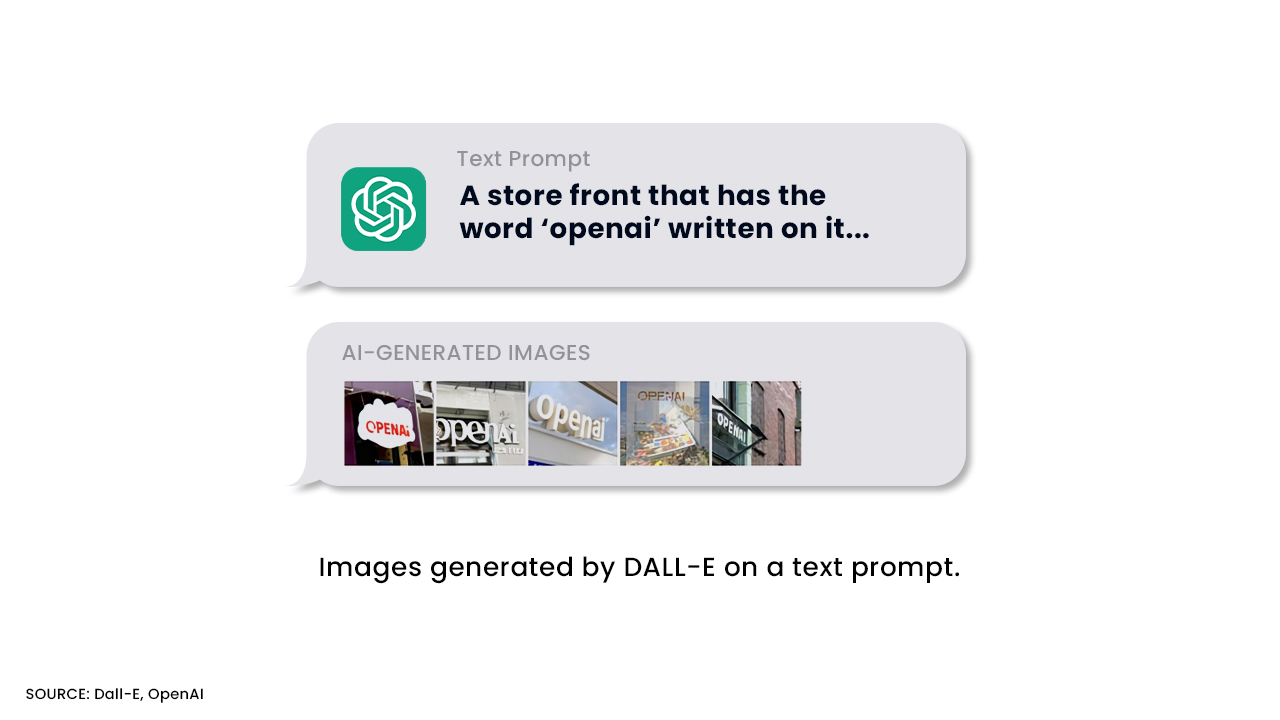
Disruptive Power of ChatGPT: Applications
Global Conversational AI Market was valued at $8.24 billion in 2022 and it is expected to reach $32.51 billion by 2028 with a CAGR of 21.6% over the period [1]. ChatGPT can disrupt various industries where automation and personalization in customer interactions can bring improved efficiency. Gartner mentions in its research that by 2025, 30% of outbound marketing messages from large organizations will be synthetically generated, compared to less than 2% in 2022 [2].
Some use cases that industries can leverage while keeping their business goal and strategy in mind are:
•Customer service and chatbots: They can deliver efficient responses, improving resolution time and customer satisfaction by automating routine inquiries and 24/7 support. It can be integrated across all domains, like e-commerce, healthcare, retail, and banking. In healthcare, it can be used for asking simple medical questions, treatment information, and even medicine consultations.
•Personalized recommendations: The retail industry can now provide customers with tailored, real-time product recommendations that meet their unique needs. This dynamic approach to search and discovery will elevate the product search experience by helping customers find the right product with updates on promotions.
•Content creation: Content creation is an invaluable tool for companies to optimize time and resources. Through high-quality articles, blogs, and social media updates created on a large scale, media & entertainment law firms can benefit immensely from specialized writing assistants that exceed human capabilities in screenwriting dialogues while also providing top-tier contract writing services.
•Code generation: With the help of ChatGPT, technology professionals across the spectrum are empowered to maximize productivity through code generation. This breakthrough enables non-developers to carry out tasks that need basic coding efforts.
•Targeted and engaging marketing campaigns can be created for search engine advertising.
•Synthetic data can be generated to train ML (Machine Learning) models keeping the privacy of the sources. A perfect example is in healthcare, where patient data can be synthetically generated for research purposes.
By utilizing inverse design, the automotive, electronics, and defence industries can unlock material performance to optimize product development life cycles, reducing lengthy lead times from weeks to hours.
How can Insurance Sector leverage ChatGPT?
Our Client Partner, Anindya Sengupta, says, “Fractal has worked on risk assessment by catastrophic damage detection and document digitization for its clients. We can further add value to our clients using generative AI algorithms. Fractal’s Insurance practice is working on a few demos to highlight the capabilities to clients.” He lists down 4 use cases of ChatGPT and other generative AI models that will have the most value-add for enterprises in the insurance industry:

How can enterprises in the Technology, Media & Entertainment sector leverage ChatGPT?
ChatGPT can bring significant disruption across technology, media & entertainment sectors with its suitability for rapid adoption in businesses. According to Chandramauli Chaudhuri, Principal Data Scientist, “It is a pivotal moment for organizations across the globe. The disruption is real, and since its release a few months back, ChatGPT has forced enterprises, irrespective of domain and sector, to sit up and take notice. Increased automation and lower turn-around times in many sectors, which have traditionally been heavily dependent on human intellect and interaction, will likely be a theme in the future. The question is no longer about AI being smart enough to do human tasks but about how humans accept and adapt to such changes. These advances in AI will certainly usher in a period of hardship for some whose jobs are likely to be directly impacted and those who find it hard to adapt.”
A few immediate applications that are apparent and better suited for automation are:

Chandramauli adds, “The interest among businesses is partly driven by the excitement around what the technology offers and partly by concerns around the negative effects of disruption. There is also a lot of misconception and misunderstanding around what ChatGPT and Generative AI, in their present shape, can and cannot do. So, we AI practitioners must take an unbiased and well-informed stance in sharing knowledge and context.”
How can CPG enterprises leverage ChatGPT?
Since the day ChatGPT is released for public use, users have been exploring diverse ways to use ChatGPT in its current state. As soon as a question pops up in the head, the user first goes to ChatGPT because it is fun and easy, plus you get the answers with minimal effort. Sometimes, it may even give incorrect information, but it helps the users in the ideation process and have a rough draft ready in seconds. Some marketing experts are also sharing ways to use ChatGPT and other tools to enhance branding and campaign-building strategies.
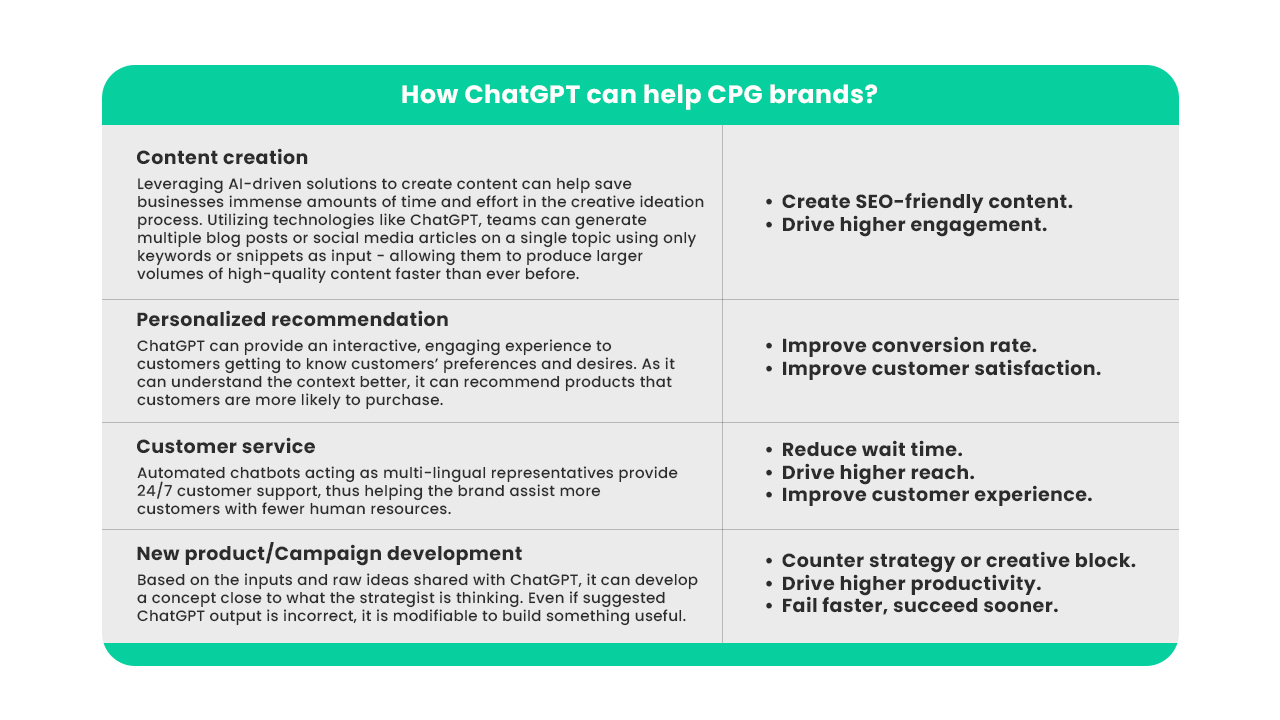
Here is an example of how ChatGPT can be used for designing a campaign email. Prompt to ChatGPT: “Suggest a few subject lines for campaign emails for a new launch of coffee beverage with cinnamon flavor.”
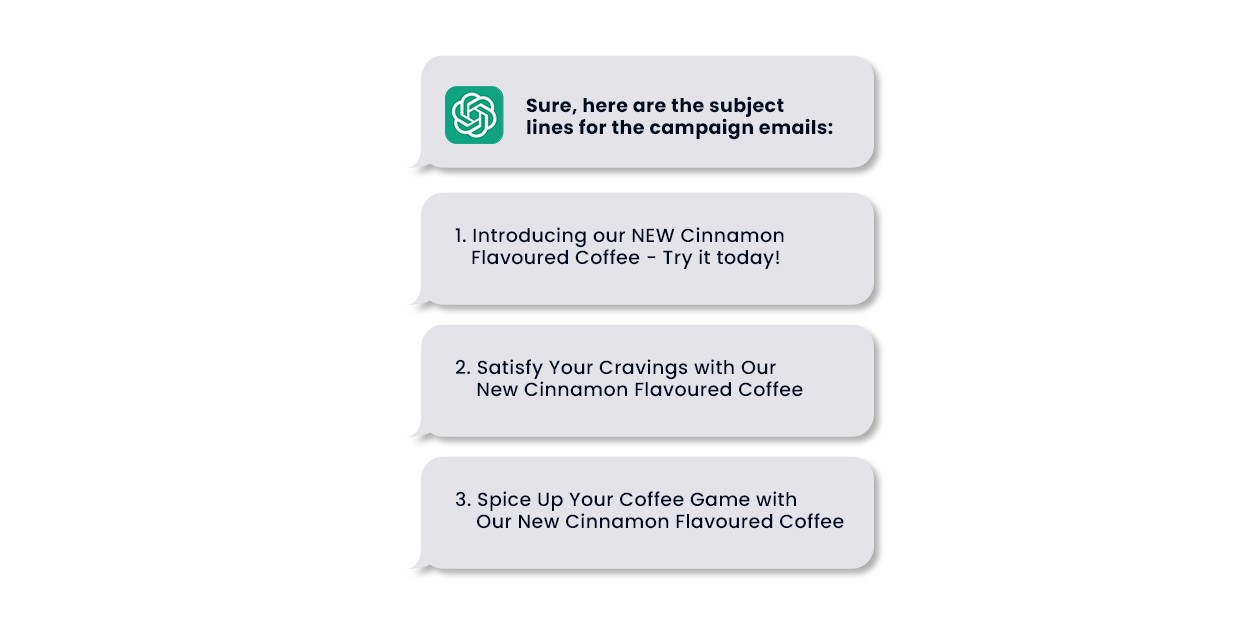
The initial suggestions may be very generic and cannot be used as is. Here are a few specific prompts.
Prompt to ChatGPT: “Can you make it more interesting? My target audience is the 18-24 age group.”
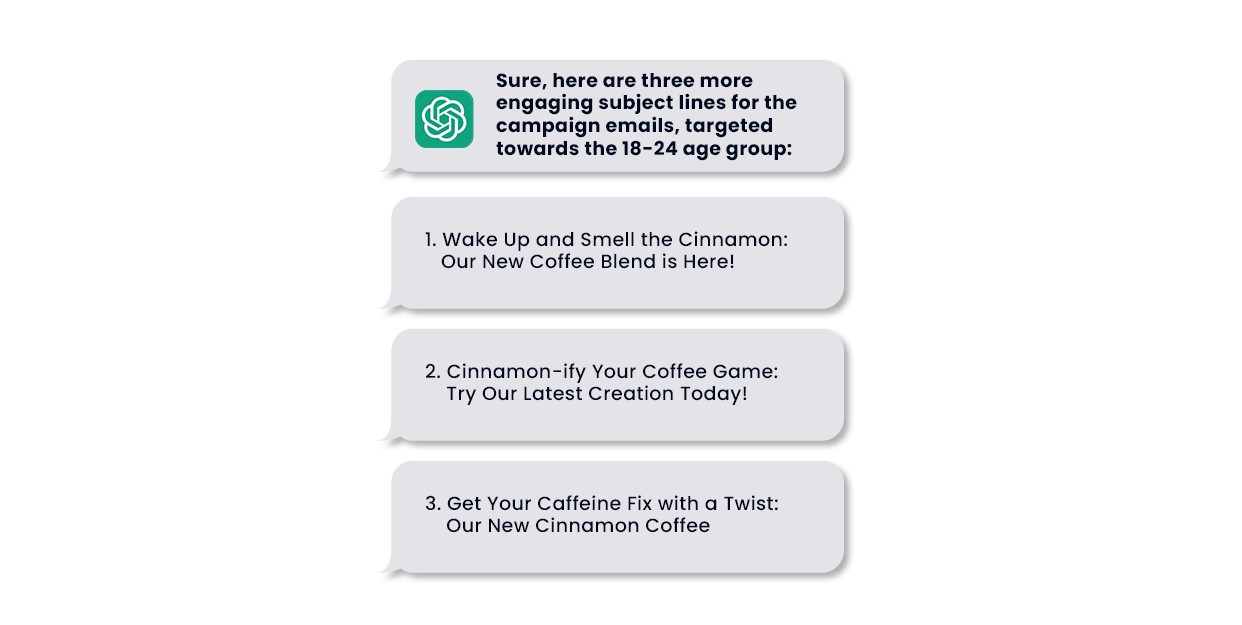
The second prompt does give slightly better results. Marketers can work on and improve the suggested results. In seconds, it can generate starter ideas that may otherwise take hours of human discussions. From the above example, it is evident that ChatGPT can save a lot of ideation time and help clear the creative block. Figure 4 illustrates the prompt engineering methodology to get better results from ChatGPT.
There are numerous other ways of utilizing ChatGPT for marketing and branding activities. ChatGPT integration is an increasingly popular avenue for brands to optimize their workflow. As such, companies must keep a record of each activity that utilizes its capabilities – enabling them to evaluate the effects and accurately distinguish this data from other core performance metrics. It will also be interesting to see the effectiveness of ChatGPT integration by measuring success in business operations.
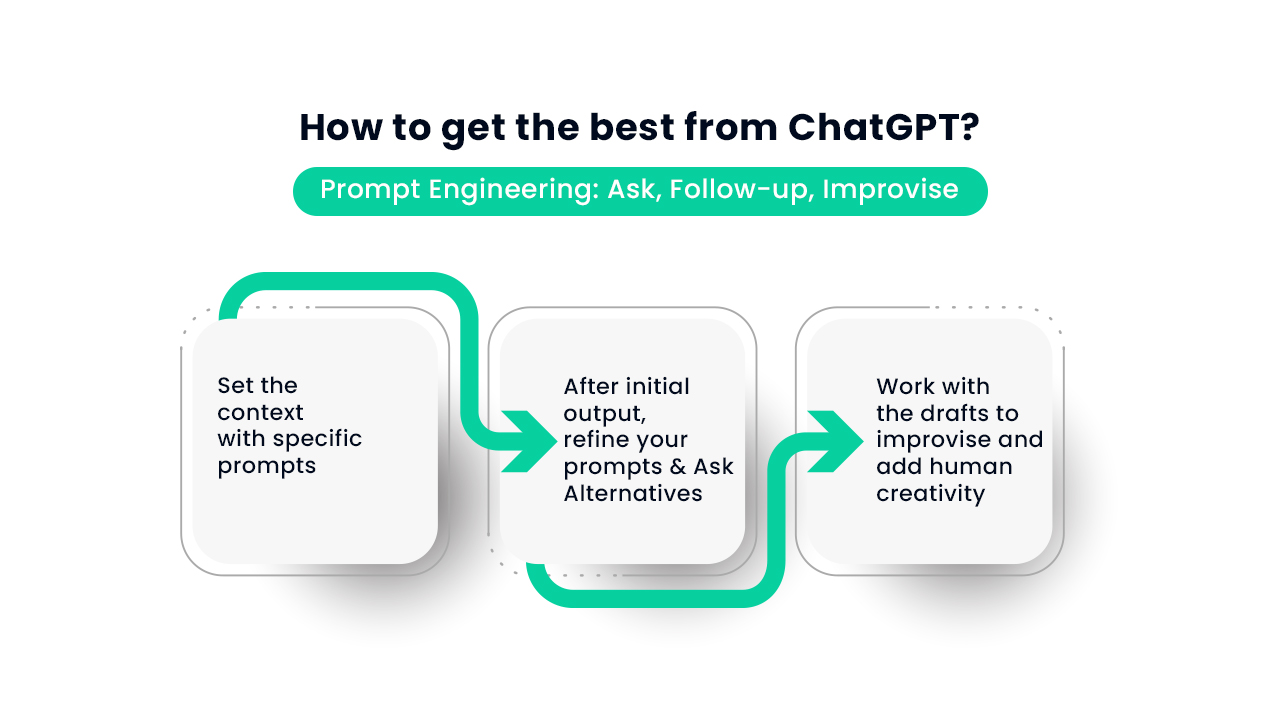
How can enterprises in Retail leverage ChatGPT?
Keeping pace with the shifting consumer habits is a common challenge retail companies face. Thus, it is necessary to be proactive with consumer demand and manage the ever-evolving customer expectations. ChatGPT can contribute to this space by analyzing sales data and predicting the future market. It can even use social media trends to understand emerging consumer behaviors.
Seema Agarwal, Client Partner, highlights, “ChatGPT has the potential to disrupt the ways of working of retail enterprises. It can be trained to understand sales and marketing queries from customers and provide appropriate responses, which can lead to increased sales and customer engagement.” She further lists down some potential applications that can provide business value in retail:
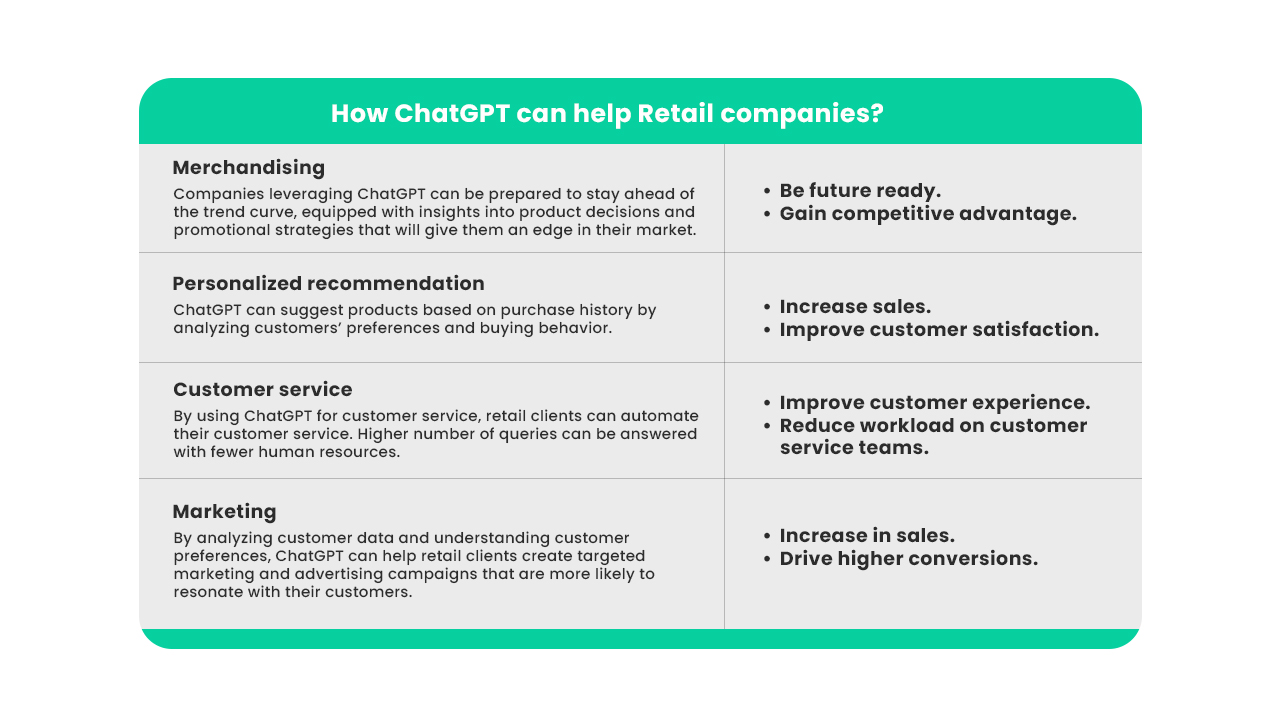
What is the impact on stakeholders?
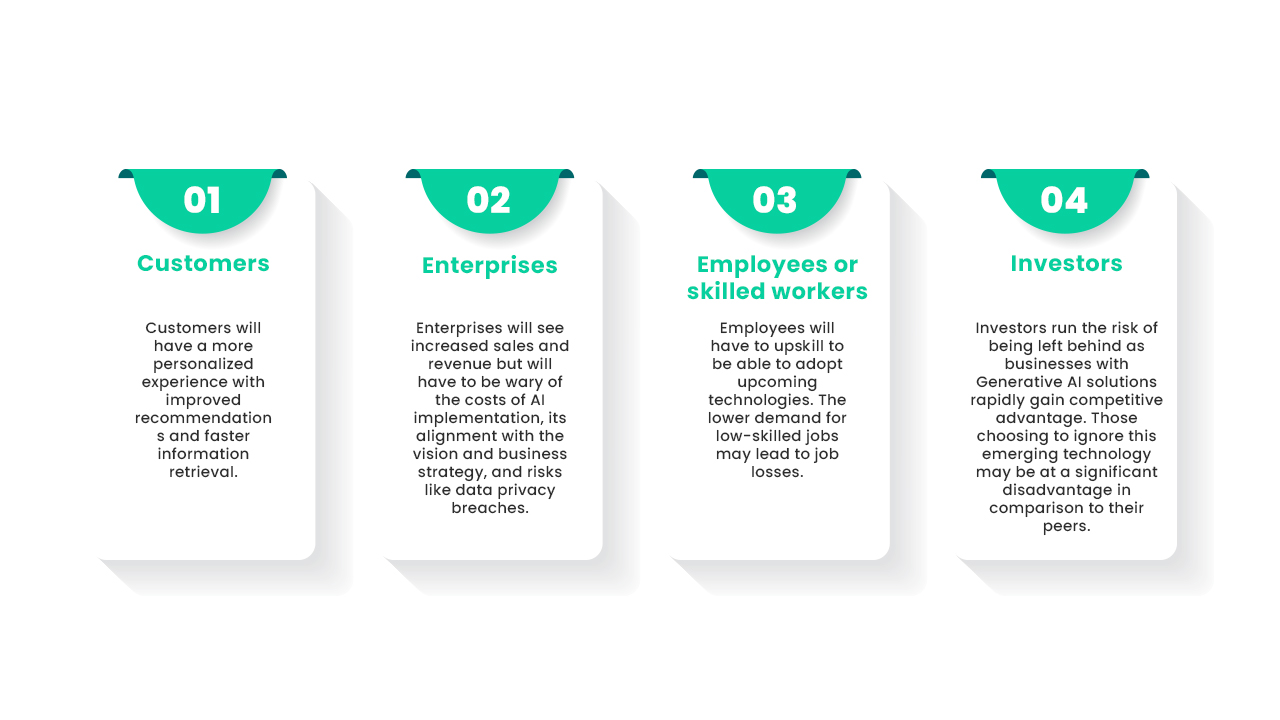
Investments in Conversational AI
Google releases Bard, an experimental conversational AI
One of the immediate reactions, post-release of ChatGPT, from Google is the release of its new technology Bard, an experimental conversational AI service, on a lightweight model version of LaMDA (Language Model for Dialogue Applications), as shared in a blog by Sundar Pichai, CEO of Google, and Alphabet. PaLM (Pathways Language Model), Imagen (Text-to-Image diffusion model), and MusicLM (Text-to-Music) are some of its newest AI technologies which will be integrated with Google’s products soon. Google has also joined hands with start-ups – Cohere, C3.ai, and Anthropic through their Google Cloud partnerships. It has invested $400 million in Anthropic[3], founded by former employees of OpenAI, which started with a ChatGPT-like language model assistant named Claude.
The reaction from Google indicates that ChatGPT is a potential threat to Google’s search engine. The speculation that it could even replace the search engine further adds to the concern, as over 75% of its revenue is contributed by Google ads. Even smaller companies stand a chance to compete against such large companies, because they can leverage AI technology with limited resources and capabilities
The third phase of the Microsoft and OpenAI partnership
Microsoft, one of the top investors in OpenAI, is reported to invest $10 billion[4], following investments in 2019 and 2021. In the second week of February ’23, it launched its AI-powered search engine, Bing, and Edge browser. In the same week, the Bing Mobile app jumped to the 12th spot on the US App Store in the free iOS apps category, while Edge browser moved to the 3rd spot in top utility apps. This indicates the high intent to explore and try Microsoft’s ChatGPT integration. The question arises if Microsoft can challenge the dominance of Google Search with this integration.
Few conversational AI start-ups that raised funds in 2022
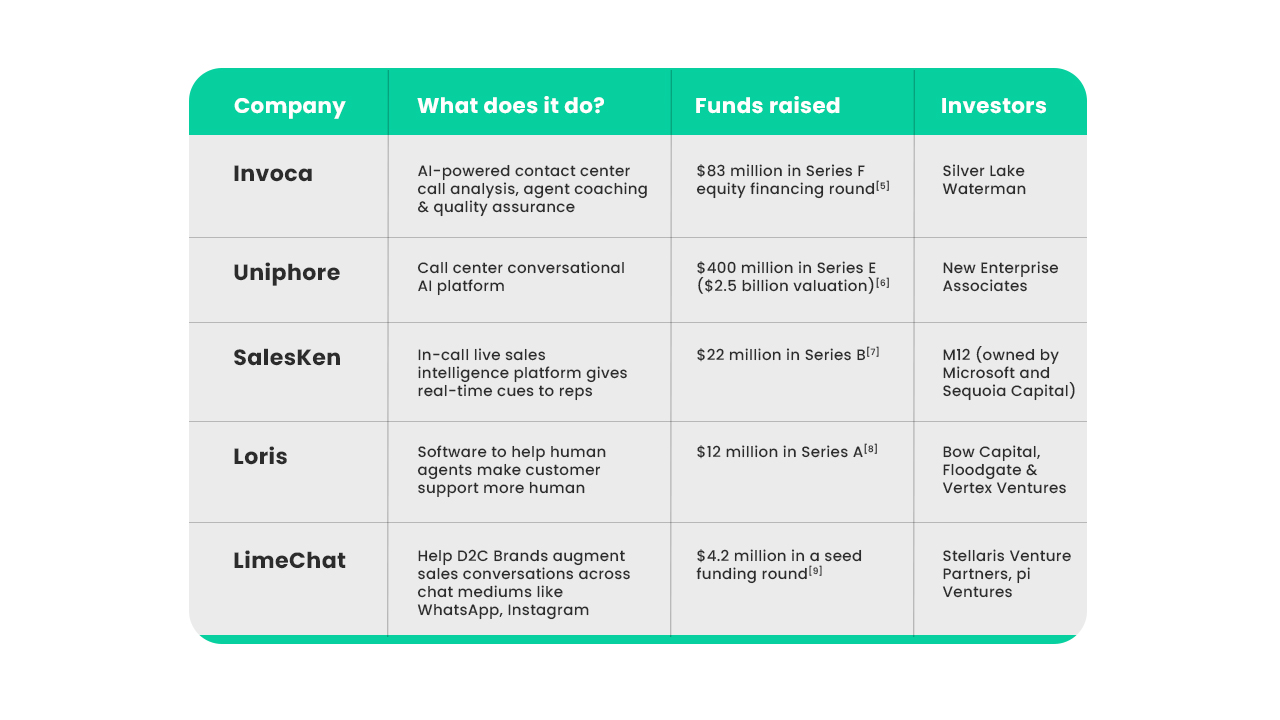
Challenges with developing and deploying ChatGPT

Open AI is also surveying the users to understand the economic impact of the technology such that they can safely deploy such AI systems moving forward. One of the financial challenges enterprises can face is the high maintenance cost. Ensuring ChatGPT runs optimally requires careful consideration of a variety of factors — from model size to computing power and cloud hosting. Investing in the right infrastructure upfront can make all the difference in streamlining costs for successful maintenance. It may require significant investment to maintain and do R&D to improve capabilities.
ChatGPT is hosted on Microsoft’s Azure Cloud, and each word generated costs about $0.0003 [10]. It is estimated that the running costs are about $3 million per month. The figure is estimated to be even higher, considering costs in R&D, human resources, and scaling for more users. Businesses that invest higher budgets to adopt the Generative AI technology will have a competitive advantage over their competitors.
While the deployment challenges are important, enterprises must ensure that future innovations and advanced technologies are safe and responsible. The ethical
There is a long lag between training the network and using it. Hence, frequent retraining will be required if companies like Microsoft and Google plan to incorporate such large language models into their search engines – this, in turn, will have a follow-on effect on companies like Nvidia and other hardware vendors who provide the heavy lifting for training DNNs. Further, this has an impact at the outcome side of the applications – ensuring correctness and reliability of information ChatGPT and generative ai frameworks produce. This links back to many ethical / responsible ai considerations which organisations adopting such technology need to take into consideration. –Chandramauli Chaudhuri, Principal Data Scientistconcerns must be addressed at the very outset. Keeping a check on offensive language, hate speech, bias, misinformation, and its legal repercussions will be a significant challenge. Most importantly, the users themselves may share sensitive information that will now be stored in the database, although ChatGPT advises against it. The ‘right to be forgotten,’ part of EU-GDPR regulations, is still under question.
In the future, we can expect full-fledged usable drafts as outputs and as the model becomes smarter, it may not even require human intervention to edit and refine the output further. ChatGPT and other Generative AI tools have an enormous potential to shake the traditional systems and disrupt the ways of working. However, it is of utmost and equal importance that the transitions are safe, responsible, and ethical. Society and industry must carefully approach this technological revolution considering the economic, social, and cultural implications of how it will be used.

